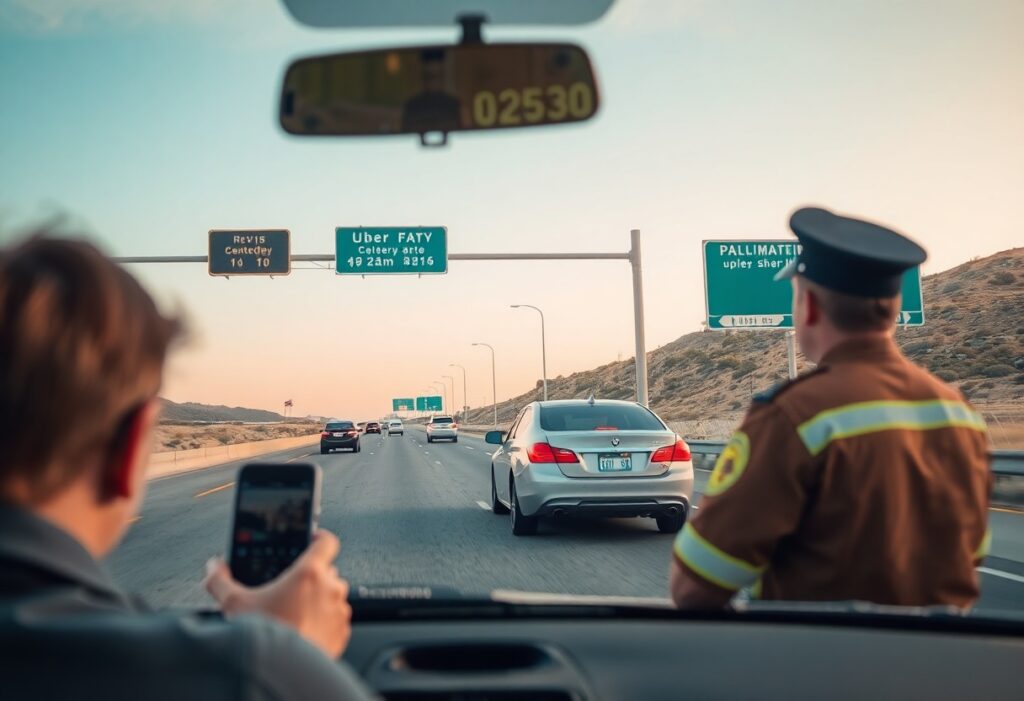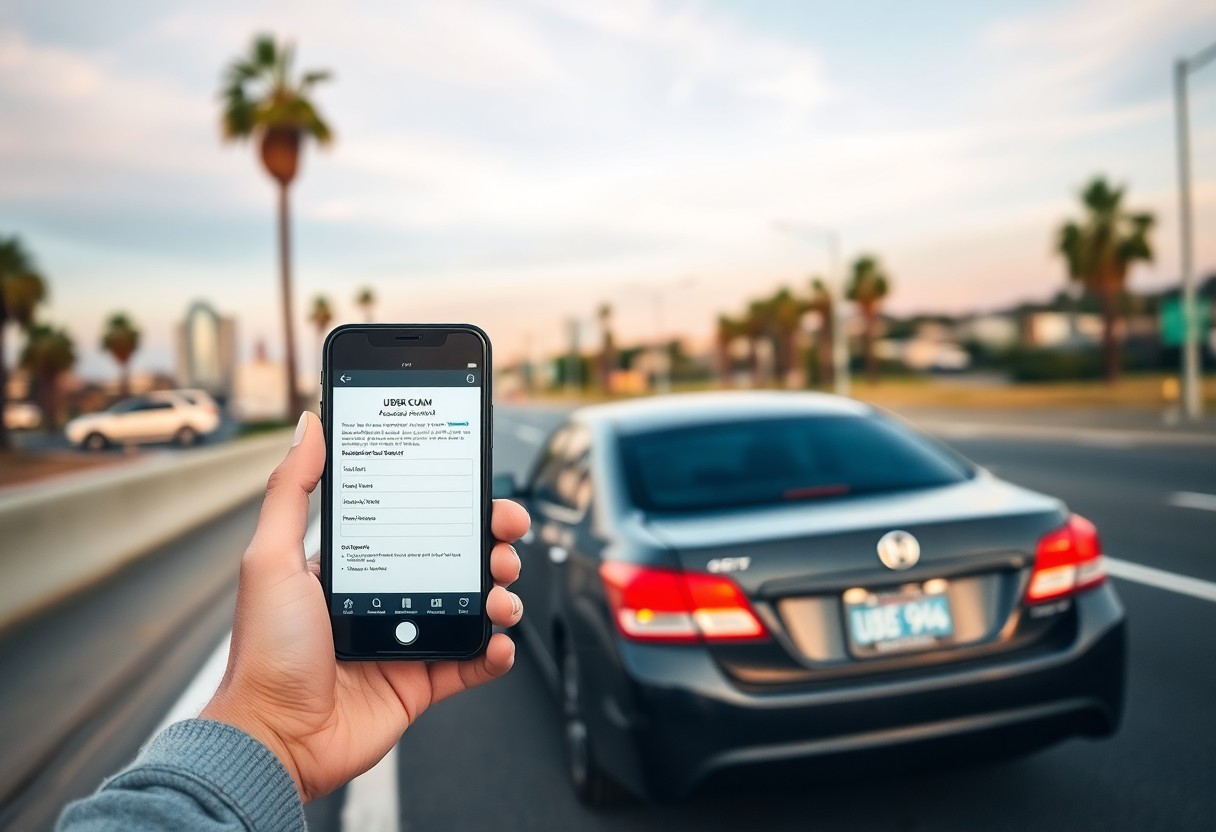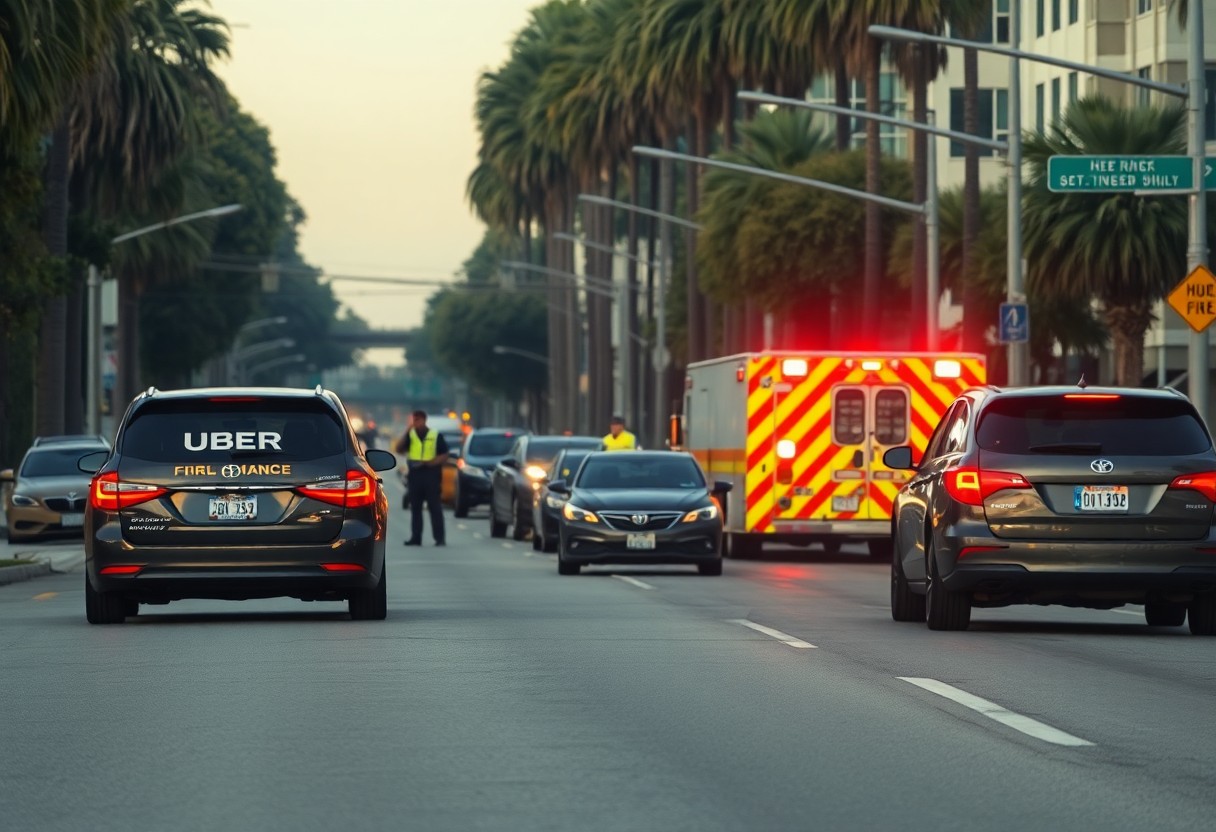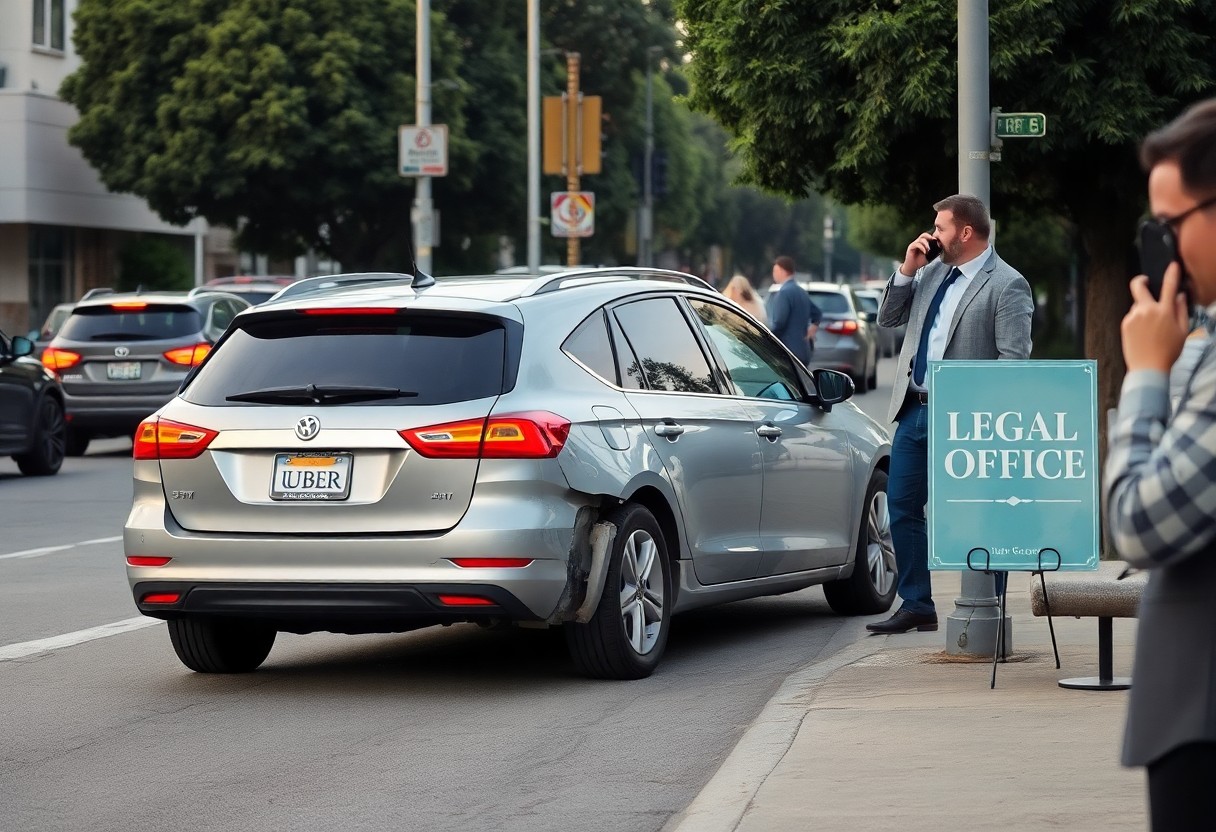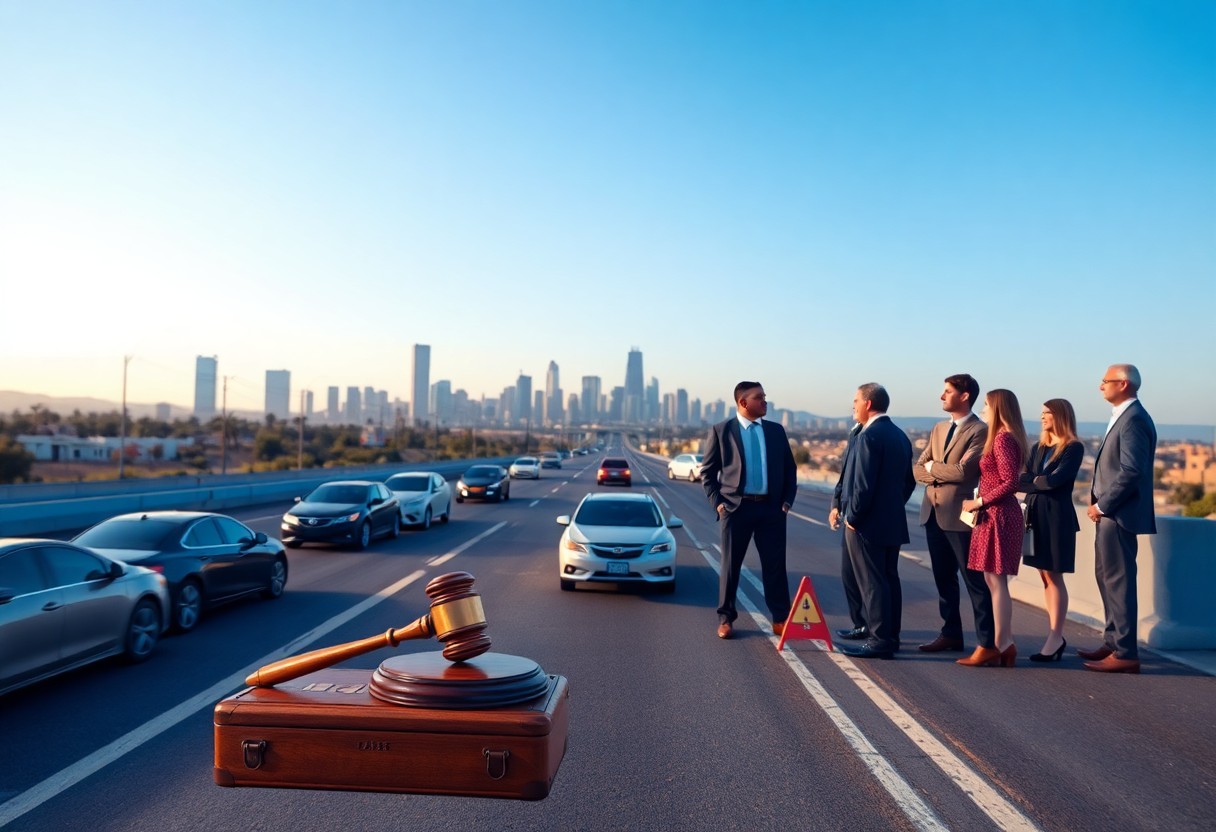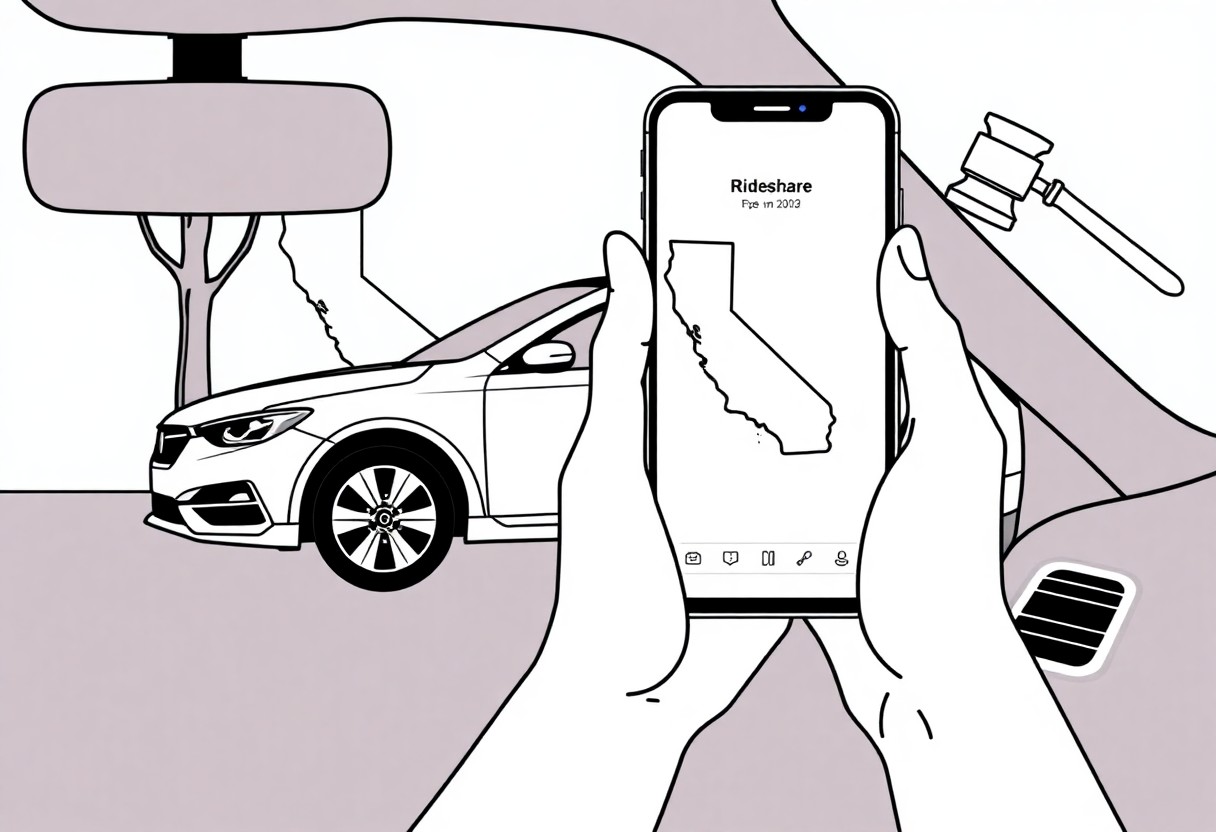Over countless rideshare experiences, you may find yourself involved in an Uber accident, leaving you uncertain about your legal rights and responsibilities. Knowing how to navigate the aftermath is vital for ensuring you receive fair compensation for any injuries or damages. In this guide, we’ll break down the steps you should take immediately following an accident to protect your rights, from gathering evidence to communicating with insurance companies and seeking legal help when necessary. Equip yourself with the knowledge to safeguard your interests during this challenging time.
Key Takeaways:
- Documentation: Ensure you gather all relevant information post-accident, including contact details, photographs of the scene, and witness statements to support your claim.
- Insurance Claims: Understand the differing insurance policies involved, as Uber provides coverage under specific conditions, and filing a claim may involve multiple parties.
- Legal Representation: Consult with an attorney experienced in rideshare accidents to navigate the legal complexities and protect your rights effectively.
Understanding Your Rights
After an accident involving a rideshare vehicle, it’s important to grasp the complexities surrounding your rights. In California, laws governing rideshare scenarios vary significantly from traditional taxi services or personal vehicle accidents. Being aware of these nuances can empower you to take the appropriate actions right after an accident, whether you are a driver, passenger, or a third-party individual involved in the incident. Knowing your rights can make the difference in recovering damages and holding the responsible parties accountable.
Rideshare Driver vs. Passenger Rights
You have rights as both a driver and a passenger in a rideshare accident, but they differ slightly based on your role. As a passenger, you are generally entitled to seek compensation for injuries sustained due to the negligence of the driver, whether that driver is the rideshare driver or another motorist. On the other hand, if you are a rideshare driver, you may need to navigate the complexities of insurance coverage for accidents that occur while transporting passengers or while online but without a passenger.
Coverage Differences in California
Your experience after an accident can vary significantly based on the specific coverage in place at the time of the incident. California laws permit rideshare services like Uber and Lyft to provide a range of insurance protections, categorized into three different periods: when the driver is offline, en route to pick up a passenger, and while a passenger is in the vehicle. Each stage has different liability limits and coverage specifics that can affect your claim.
Understanding how these different coverage levels apply can have a major impact on how compensation is pursued. For example, if the rideshare driver was inactive (offline) at the time of the accident, they may be personally liable for any damages, as Uber and Lyft do not offer coverage in that scenario. Conversely, if the driver was on the app and had accepted a passenger, you can access Uber’s or Lyft’s insurance policies, which can provide coverage of up to $1 million in liability claims. Hence, having a clear understanding of these coverage differences is crucial for effectively protecting your rights and pursuing any necessary claims after an accident.
Immediate Steps to Take After an Accident
While experiencing an Uber accident can be overwhelming, knowing the immediate steps to take can significantly affect your safety and rights. Following an accident, the very first priority should be to ensure everyone is safe. If you are able, move to a safe location away from traffic to avoid further incidents. Check on the welfare of your passengers, the other driver, and any bystanders. If anyone is injured, call 911 for help right away. Getting medical assistance promptly is vital; even if injuries seem minor, it’s important to get checked out by a professional.
Ensure Safety First
Safety is your foremost concern after an accident. After moving to a safe area, turn on your hazard lights to alert other drivers. Assess the condition of everyone involved, and do not leave the scene until you have gathered the necessary information and authorities have arrived. In some situations, the anxiety of the moment may make it hard for you to think clearly, so take a moment to gather your thoughts and focus on the next steps.
Gather Evidence
Clearly documenting the accident scene is vital for protecting your rights. Use your smartphone or a camera to take photographs of the vehicles involved, any visible damages, and the surrounding environment. Be sure to capture additional details such as road conditions, intersection signs, and any relevant landmarks. This evidence can be extremely beneficial in supporting your claim later on, should you need to file one.
Take down all important information, including names, contact information, license plates, and insurance details from everyone involved in the accident. Additionally, look for eyewitnesses and ask for their contact information as well, as they could provide valuable statements regarding the incident. The more evidence you gather now, the stronger your case will be if you proceed with claims for damages or personal injury. It’s vital to approach this step methodically, as every detail may contribute to understanding the accident and your rights within the situation.
Reporting the Incident
Now that you’ve ensured everyone’s safety following an Uber accident, your next step involves reporting the incident. Timely and accurate reporting can significantly impact the outcome of your claim and protect your rights. Once you have addressed any immediate medical needs, your focus should shift to gathering information and notifying the relevant parties.
Contacting Uber
Now, one of the first actions you should take after an accident is contacting Uber. You can do this through the Uber app or the company’s website. Providing a complete and accurate account of the events that transpired can assist in documenting the accident. It’s important to include details such as the date, time, location, and any other relevant information regarding the incident. Keep in mind that Uber has specific procedures in place to handle accident reports and will conduct an investigation on their end.
Informing Law Enforcement
Enforcement of the law is another critical step in reporting your Uber accident. You should notify local law enforcement as soon as possible, especially if there are injuries or significant property damage. They will arrive on the scene, assess the situation, and file an official police report. This report can serve as an imperative piece of evidence if you need to seek compensation later on, as it provides a detailed account of the accident from an unbiased perspective.
Contacting law enforcement not only helps in documenting the facts of the accident but also ensures that any potential violations, such as traffic infractions, are recorded. Having an official report can strengthen your case when pursuing claims against the at-fault driver or Uber itself. Additionally, having police involvement can help to maintain order at the scene and assist in managing any tensions that may arise between parties involved in the accident.
Factors Affecting Your Claim
Not every Uber accident results in the same outcome when it comes to payouts or settlements. Several factors can significantly impact your claim for compensation. These include:
- Your level of injury
- The extent of vehicle damage
- The clarity of liability
- The insurance policies involved
- Any pre-existing conditions you may have
Knowing how these factors interact can help you prepare and position your claim more effectively.
Insurance Policies
Your claim will likely involve a variety of insurance policies. This includes your own auto insurance, the insurance for the Uber driver, and potentially Uber’s insurance coverage as well. Understanding how these policies interrelate is vital to knowing which may be liable for your damages. Uber has specific insurance provisions depending on the driver’s status at the time of the accident, such as whether they were en route to pick up a passenger, actively transporting a passenger, or offline. This can directly impact how much you could recover.
Fault Determination
The determination of fault plays a pivotal role in your claim process. In California, the law follows a comparative negligence standard, which means that even if you are partially at fault for the accident, you may still be entitled to recover damages based on the percentage of fault attributed to the other parties involved. The clearer the evidence showing who is to blame, the stronger your claim will likely be.
Claim investigations often include the analysis of witness statements, police reports, and dashcam footage. These elements can provide vital insights into the circumstances surrounding the accident, which will be crucial in establishing fault. If you were found to be less at fault, your recoverable damages may be maximized to reflect the proportionate liability of the other party. Understanding this can guide your next steps in filing your claim effectively.
Filing a Claim
All accident victims face the task of filing a claim after an incident, especially in scenarios involving rideshares like Uber. To navigate this process effectively, you need to be aware of the types of claims available to you following an Uber accident in California. Depending on the specifics of your accident, you may have several options to seek compensation for your injuries and damages.
Types of Claims Available
While recovering from your injuries, it’s necessary to understand the different claims you may pursue:
| Claim Type | Description |
| Personal Injury Claim | For injuries you sustained due to the Uber driver’s negligence. |
| Property Damage Claim | To cover the cost of repairing or replacing your vehicle. |
| PIP Claim | For medical expenses and lost wages, regardless of fault. |
| Third-Party Claim | If another driver was at fault in the accident. |
| Uber’s Liability Claim | In cases where Uber’s insurance applies. |
Any of these claim types may be relevant to your situation, depending on the unique circumstances surrounding your accident.
Importance of Legal Representation
Claims made after an accident can be overwhelming, particularly considering the complexities of Uber’s insurance policies and California’s legal landscape. With your rights at stake, having skilled legal representation is fundamental to ensuring that you effectively advocate for yourself throughout this process.
A knowledgeable attorney provides guidance in detailing your claim, negotiating with insurance companies, and ensuring you comply with all legal deadlines. Their expertise translates into a higher likelihood of maximizing your compensation for any medical expenses, lost wages, or pain and suffering you have experienced due to the accident. With their help, you can focus on your recovery while they handle the intricacies of your case.
Tips for Navigating Your Rights
For anyone involved in an Uber accident in California, knowing how to navigate your legal rights is vital. Understanding the steps you need to take can make a significant difference in protecting yourself after the incident. Here are some tips to help you:
- Seek medical attention as soon as possible, even if injuries seem minor.
- Document the incident thoroughly, including photos and witness statements.
- Contact Uber to report the accident promptly.
- Consult with an experienced personal injury attorney who understands rideshare accidents.
- Be cautious when discussing the accident with insurance representatives.
After you have taken these initial steps, you can focus on your legal options and ensure that your rights are upheld throughout the process.
Keeping Records
The importance of maintaining detailed records cannot be overstated when navigating your rights after an Uber accident. From the moment the accident occurs, begin documenting everything, including the date, time, and details of what happened. Keep copies of medical reports, bills, and any communications with Uber or their insurers. This information is vital as it can support your case, particularly if disputes arise regarding fault or damages.
As you compile your records, do not overlook the value of documenting your recovery process. Include notes on your physical and emotional health, treatment progress, and any changes to your work or personal life as a result of the accident. Having a comprehensive record will not only aid your attorney but will also equip you to negotiate more effectively if a settlement offer arises.
Understanding Settlement Offers
The aftermath of an Uber accident may lead to a settlement offer from Uber’s insurance company. These offers can be appealing, but it’s vital to comprehend their implications fully. Often, the initial settlement amount may seem adequate, but it may not reflect the true extent of your damages, including medical expenses, lost wages, and pain and suffering. Evaluate any settlement offers cautiously and consider consulting with a legal professional before accepting.
Understanding how settlement offers work can impact your future financial stability. You might receive a prompt offer, but it’s vital to assess whether it covers all your current and future expenses related to the accident. Evaluate factors such as ongoing treatment costs, potential lost income, and any long-term impact on quality of life. Accepting a settlement too quickly can lead to significant challenges later, as the offer is often based on immediate costs without considering long-term consequences.
Summing up
Upon reflecting on how to protect your rights after an Uber accident in California, it’s important to understand the legal nuances surrounding rideshare services. First, you should gather all pertinent information immediately following the incident, including the ride details, photos of the scene, and statements from witnesses. This documentation will serve as a solid foundation for any claims you may pursue. Additionally, seeking medical attention, even if injuries seem minor, is imperative, as some injuries can manifest later. Furthermore, promptly reporting the accident to Uber and notifying your insurance provider will help facilitate the claims process while ensuring that you comply with necessary reporting timelines.
Taking these steps not only preserves your rights but also sets you up for a favorable outcome should you need to file a claim. Engaging with a qualified attorney who specializes in rideshare accidents can provide you further guidance tailored to your unique situation. They can help navigate any complex legal scenarios that may arise, ensuring that your best interests are represented. By being proactive and informed, you can effectively safeguard your rights and work toward receiving the compensation you deserve for your injuries and losses.


